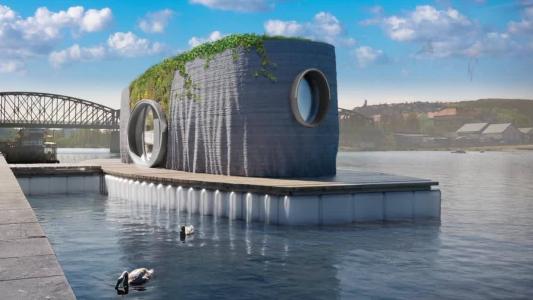The Norwegian manufacturer Yara is looking to reduce the carbon footprint of nitrogen fertilizer production — making sure that the fuel that feeds the world doesn’t suffocate it, too.
Working with French utility company ENGIE, they plan to use solar power as a greener method to produce fertilizer, with the testing site to be integrated into an existing plant in Western Australia, ABC (the Australian Broadcasting Corporation, not the home of The Bachelor) reports.
Ammonia is the key component of fertilizer manufacturing, but producing it requires natural gas. Yara’s plan is to remove the natural gas, replacing it with ammonia derived from solar power.
Using a solar powered electrolyzer, the plant would split water into oxygen and hydrogen. Then that hydrogen will be combined with nitrogen to create ammonia.
“A molecule of renewable ammonia is exactly the same molecule as a conventional one,” Chris Rijksen, Yara’s manager in the Land of Black Swans, told the ABC.
“It’s just produced from a carbon-free source.”
Feeding a World
Fertilizer has had a major impact in avoiding the oft-trotted out — and Thanos-like — trope that population will outstrip food supplies, a dire prediction that has not come to be.
Nitrogen-based fertilizer may be supporting up to half of the world’s current population, according to Our World In Data. (Infuriatingly, hunger is not an issue of supply, but access.)
But that bounty comes at a cost: a deep climate footprint. Aside from the carbon emissions from producing it, researchers at UC Berkeley found evidence that increased fertilizer use has led to a sharp uptick in nitrous oxide, a greenhouse gas contributing to climate change. Fertilizer is a necessity, but the future of food will depend on finding sustainable ways to produce and utilize it.
Nitrogen-based fertilizers goose microbes in the soil into changing nitrogen into nitrous oxide at a faster clip than normal; this speedy synthesis in turn releases an unnatural amount of nitrous oxide into the atmosphere.
Yara’s process would not address this issue; instead it is attacking the carbon emissions created by the natural gas needed for ammonia production. The fertilizer industry produces roughly 1.5% of the world’s carbon emissions, the ABC says, predominantly through the use of natural gas.
Green Agriculture
Fertilizer created with carbon-free ammonia would need to be competitively priced to ensure an impact, Rijksen told the ABC. While some may pay a premium, he believes, that would not be enough.
So far, interest has come mostly from the Asian markets.
“We see that there is a lot of interest in the Asia region; they’re the frontrunners in trying to develop a hydrogen offtake economy in their countries,” Rijksen said. “Countries like Korea … Singapore, Japan; they really want to develop that hydrogen economy.”
Western Australia’s Agriculture Minister Alannah MacTiernan has supported the plan, and the Australian Renewable Energy Agency (ARENA) has awarded funding for the project.
Yara and ENGIE plan to finalize the investment decisions in early 2021.
We’d love to hear from you! If you have a comment about this article or if you have a tip for a future Freethink story, please email us at tips@freethink.com






